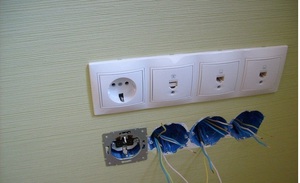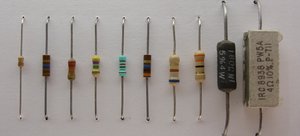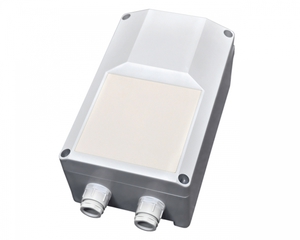Semi-automatic inverter with your own hands: scheme, video, Photo
The semi-automatic welding machine is a functional device, which can be purchased ready-made or made from an inverter with your own hands. It should be noted, that making a semi-automatic device from an inverter device is not an easy task, but if you want it can be solved. Tim, who will set such a goal, the principle of operation of the semiautomatic device should be well studied, see themed photos and videos, prepare all necessary equipment and components.
Scheme of semi-automatic welding in a protective gas environment
What is needed to convert an inverter into a semiautomatic device
To redesign the inverter, having made of it a functional semi-automatic welding machine, you need to find the following equipment and accessories:
- inverter device, able to generate welding current by force 150 A;
- mechanism, which will be responsible for the supply of welding wire;
- the main working element is a burner;
- hose, through which the welding wire will be fed;
- hose for supplying shielding gas to the welding area;
- coil with welding wire (such a coil will need to be subjected to some alterations);
- electronic unit, managing the work of your homemade semiautomatic device.
Electrical circuit of a homemade semiautomatic device
Particular attention should be paid to the processing of the feeder, due to which the welding wire is fed into the welding zone, which moves on a flexible hose. That the welded seam turned out high-quality, reliable and accurate, the feed rate of the wire through the flexible hose must correspond to the rate of its melting.
Because when welding with a semiautomatic device, wire of different materials and different diameters can be used., its feed rate must be regulated. This is exactly the function - the regulation of the feed rate of the welding wire - is exactly what the mechanism should perform, semi-automatic feeder.
Appearance of a homemade semi-automatic welder
The most common wire diameters, used in semi-automatic welding, is 0,8; 1; 1,2 and 1,6 mm. The wire is wound on special coils before welding, which are prefixes of semi-automatic devices, attached to them by simple structural elements. In the process of welding the wire is fed automatically, which significantly reduces time, spent on such a technological operation, simplifies it and makes it more efficient.
The main element of the electronic circuit of the control unit of the semiautomatic device is the microcontroller, which is responsible for regulating and stabilizing the welding current. The parameters of the operating current and the possibility of their adjustment depend on this element of the electronic circuit of the welding semiautomatic device..
How to redo a household transformer
In order for the inverter to be used for a homemade semiautomatic device, its transformer needs to be subjected to some alterations. It is easy to make such a mess with your own hands, you just have to follow certain rules.
To bring the characteristics of the inverter transformer in line with those, which are necessary for the semiautomatic device, it should be wrapped with a copper strip, on which the winding from thermal paper is put. It is necessary to keep in mind, that for these purposes it is impossible to use a usual thick wire, which will be very hot.
Redesigned inverter transformer
The secondary winding of the inverter transformer also needs to be redesigned. To do this, do the following: wind up the winding, consisting of three layers of tin, each of which must be insulated with fluoroplastic tape; the ends of the already existing winding and made with their own hands to solder together, which will increase the conductivity of currents.
Structural scheme of the inverter, used for its inclusion in the semi-automatic welding machine, must provide a fan, which is necessary for efficient cooling of the device.
Inverter settings, used for semi-automatic welding
If you decide to make your own semi-automatic welding machine, using an inverter, this equipment must be de-energized beforehand. So that such a device does not overheat, it should be placed rectifiers (input and output) and power switches on radiators.
Power diodes on additional radiators
in addition, in that part of the inverter housing, where the radiator is located, heats up more, it is best to mount the temperature sensor, which will be responsible for disabling the device in that case, if it overheats.
After all the above procedures are performed, you can connect the power part of the device to its control unit and connect it to the mains. When the network connection indicator lights up, an oscilloscope should be connected to the inverter outputs. With the help of this device you need to find electrical pulses with frequency 40-50 kHz. The time between the formation of such pulses should be 1,5 μs, regulated by changing the voltage, coming to the input of the device.
Oscillogram of welding voltage and current: left on the reverse polarity, on the right - in a straight line
It is also necessary to check, to pulses, reflected on the oscilloscope screen, had a rectangular shape, and their front was no more 500 ns. If all checked parameters correspond to the established parameters, then you can connect the inverter to the mains. Current, coming from the output of the semiautomatic device, must be valid at least 120 A. If the magnitude of the current is less, it may mean that, that voltage is applied to the equipment wires, the value of which does not exceed 100 V. If such a situation arises, the following should be done: test the equipment by changing the current (at the same time it is necessary to constantly monitor the voltage on the capacitor). in addition, the temperature inside the device should be constantly monitored.
After the semiautomatic device is tested, it is necessary to check it under load. To make such a check, a rheostat is connected to the welding wires, whose resistance is not less 0,5 Ohm. Such a rheostat must withstand current by force 60 A. Amperage, which in this situation comes to the welding torch, controlled by an ammeter. If the current strength when using a load rheostat does not meet the required parameters, then the value of the resistance of this device is selected empirically.
How to use a welding inverter
After starting the semiautomatic device, which you collected with your own hands, the current value should be displayed on the inverter indicator, Rivne 120 A. If done correctly, then it will happen. However, eights may appear on the inverter indicator. The reason for this is often insufficient voltage in the welding wires. It is better to immediately find the cause of such a fault and promptly eliminate it.
If everything is done correctly, then the indicator will correctly show the strength of the welding current, adjustable with special buttons. Operating current control interval, which is provided by welding inverters, is within 20-160 A.
Approximate modes of semi-automatic butt welding
How to control the correct operation of equipment
To semi-automatic welding, which you collected with your own hands, served you for a long time, it is better to constantly monitor the temperature of the inverter. To perform such control, you must press two buttons at the same time, then the temperature of the hottest radiator of the inverter will be displayed on the indicator. Normal operating temperature is considered to be, whose value does not exceed 75 degrees Celsius.
If this value is exceeded, then, in addition to information, displayed on the indicator, the inverter will emit an intermittent beep, what you should pay attention to immediately. In this case (as well as in case of breakage or short circuit of the temperature sensor) the electronic circuit of the device will automatically reduce the operating current to a value of 20A, and the beep will sound until then, until the equipment returns to normal. in addition, about equipment malfunctions, made with their own hands, may indicate an error code (Err), is displayed on the inverter indicator.
Setting the welding mode on the Resanta inverter
In which cases the semi-automatic welding machine is used
Practice shows, that the semiautomatic device is better to use in those cases, when you need to get accurate and precise connections of parts, made of steel. With such equipment, which if desired can be made with your own hands, perform welded joints of thin metal, which is very important when repairing the body of a vehicle.
Learning to work on such a device is also easy: lessons will help, taken from qualified professionals, or training video.



